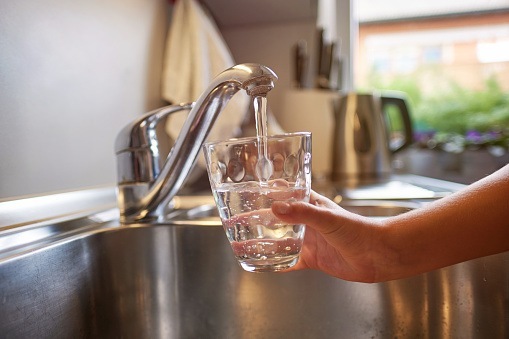
Drinking tap water may prove lethal, as the results of a study published in Heliyon found a toxic combination of chemical pollutants in US drinking water could result in more than 100,000 new cancer cases.
In this study, researchers assessed water quality 48,363 community water systems in the U.S. This assessment included water quality profiles for 48,363 community water systems. The study data set did not information for the 13.5 million American households that rely on private wells for their drinking water.
“Drinking water contains complex mixtures of contaminants, yet government agencies currently assess the health hazards of tap water pollutants one by one,” said Sydney Evans, lead author of the paper and a science analyst at EWG in a press release. “In the real world, people are exposed to combinations of chemicals, so it is important that we start to assess health impacts by looking at the combined effects of multiple pollutants.”
The researchers postulated that most of the increased cancer risk is due to water contamination with arsenic, as well as disinfection byproducts and radioactive elements such as uranium and radium. The study notes that water systems at the highest risk of contaminants tend to serve smaller communities and rely on groundwater. These communities often need improved infrastructure and resources to provide safe drinking water to their residents. However, large surface water systems contribute a significant share of the overall risk due to the greater population served and the consistent presence of disinfection byproducts.
Study estimates more than 100,000 cancer cases could stem from contaminants in tap water https://t.co/FZTZvSIdJ7 pic.twitter.com/rQXHjwHmzt
— Maximilian (@YellowDigits) September 19, 2019
“The vast majority of community water systems meet legal standards,” said Olga Naidenko, Ph.D., EWG’s vice president for science investigations. “Yet the latest research shows that contaminants present in the water at those concentrations – perfectly legal – can still harm human health.”
Naidenko added that: “We need to prioritize source water protection, to make sure that these contaminants don’t get into the drinking water supplies to begin with.”
Study estimates more than 100,000 cancer cases could stem from contaminants in tap water https://t.co/lsXLmkLkdR via @instapaper
— James Igoe (@JamesJosephIgoe) September 19, 2019
Study estimates more than 100,000 cancer cases could stem from contaminants in tap water: https://t.co/2NsnTB3l7X #water #tapwater #hydrate #cleanwater #saturdaymotivation
— Lori Shemek, PhD (@LoriShemek) September 21, 2019







 © 2025 Mashup Media, LLC, a Formedics Property. All Rights Reserved.
© 2025 Mashup Media, LLC, a Formedics Property. All Rights Reserved.